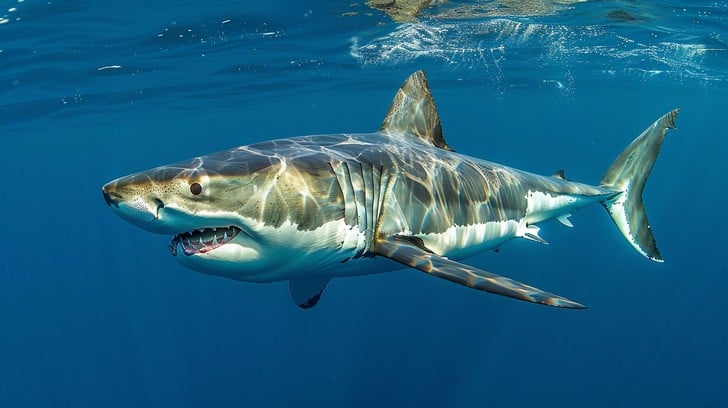shilohcreekkennels.com – The great white shark, Carcharodon carcharias, is a magnificent apex predator that has captured the human imagination for centuries. Its sleek, torpedo-shaped body, powerful jaws, and rows of razor-sharp teeth make it one of the most feared creatures in the ocean. However, despite its fearsome reputation, the great white shark is a vital part of the marine ecosystem and plays a crucial role in maintaining ecological balance.
Physical Characteristics
Great white sharks are the largest predatory fish in the world, with adults typically reaching lengths of 15 to 20 feet and weighing up to 5,000 pounds. Their bodies are perfectly adapted for hunting, with streamlined shapes that allow them to move effortlessly through the water. Their powerful tails propel them forward at incredible speeds, and their keen senses of sight, smell, and electroreception enable them to detect prey from great distances.
One of the most striking features of the great white shark is its mouth, which is filled with rows of triangular, serrated teeth. These teeth are constantly replaced throughout the shark’s life, ensuring that it always has a sharp set of weapons. Great white sharks use their teeth to tear into their prey, which can include seals, sea lions, dolphins, and even other sharks.
Hunting and Feeding Behavior
Great white sharks are opportunistic feeders, meaning that they will eat almost anything that they can catch. However, their primary diet consists of marine mammals, such as seals and sea lions. These animals are often found in large colonies, which provide the sharks with a reliable food source.
To hunt, great white sharks use a variety of techniques. They may ambush their prey from below, or they may circle and stalk their target before launching a surprise attack. Once they have captured their prey, they will often shake their heads violently to dismember it before swallowing it whole.
Conservation Status
Despite their fearsome reputation, great white sharks are facing increasing threats from human activities, including overfishing, pollution, and habitat loss. As a result, their populations are declining, and they are now listed as vulnerable on the IUCN Red List of Threatened Species.
To protect great white sharks, conservation efforts are focused on reducing fishing pressure, establishing marine protected areas, and raising public awareness about the importance of these animals. By working together, we can help to ensure the survival of these magnificent creatures for generations to come.
Misconceptions and Reality
The great white shark has been portrayed as a mindless killing machine in popular culture, but this is a misconception. In reality, great white sharks are intelligent and cautious predators. They are more likely to avoid humans than to attack them, and most shark attacks are the result of mistaken identity or territorial defense.
It is important to remember that great white sharks are an essential part of the marine ecosystem. They help to regulate populations of other species and maintain the health of the ocean. By understanding and respecting these animals, we can help to ensure their survival and protect the delicate balance of the marine environment.
